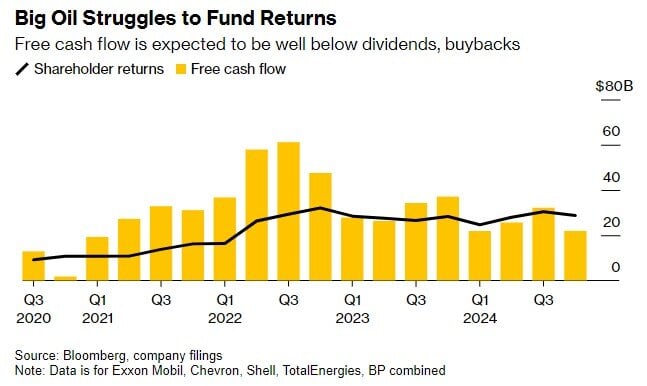Chart of the Day: The Value Stocks of Big Oil

Plan Today. Protect Tomorrow. Attend an Educational Estate-Planning Seminar

Today’s Chart of the Day, shared by my colleague Angie Parsons, is from an article in Bloomberg which illustrates what a “value” stock is.
The black line represents the history of five of some of the largest oil companies’ distributions to their shareholders vs. their earnings in yellow. As you can see, last year they distributed (through dividends and stock buybacks) more than 100% of their earnings to shareholders, which makes this a textbook example of value stocks: companies in a mature industry, demonstrating stable profits, low growth, and able to give profits back to shareholders.
In contrast, “growth” stocks, which are the exact opposite, are typically in a growing industry, such as technology, that does not have a lot of profits yet since they reinvest them into research and development and use any excess cash flow to invest for future growth.

Samuel serves as Senior Vice President, Chief Investment Officer for the Crews family of banks. He manages the individual investment holdings of his clients, including individuals, families, foundations, and institutions throughout the State of Florida. Samuel has been involved in banking since 1996 and has more than 20 years experience working in wealth management.
Investments are not a deposit or other obligation of, or guaranteed by, the bank, are not FDIC insured, not insured by any federal government agency, and are subject to investment risks, including possible loss of principal.

